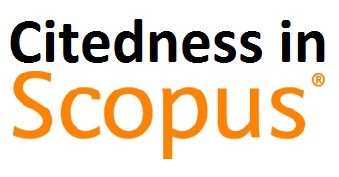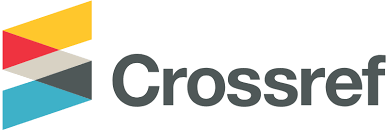READINESS OF E-GOVERNMENT IMPLEMENTATION IN DEVELOPING COUNTRIES IN THE PERSPECTIVE OF THE GOVERNMENTAL MODELS: A CASE IN INDONESIA
Abstract
Studies regarding e-Government readiness have become a mushrooming issue in developing countries. To contribute to discussions in the context of the Indonesian government, this research was designed to analyze 1 specifically) the level of readiness of the Magelang City Government, Indonesia, in implementing e-government from a government model perspective, and 2) obstacles in developing e-government-based public services in the city. Research data was collected through in-depth interviews, documentation, and observation. We used qualitative content analysis to analyze the data. The findings of this research contribute to finding the root cause of the government's unpreparedness to implement smart governance-based public services in Indonesia. The research results show that E-Government is defined as an effort to increase the effectiveness and efficiency of public services by using information and communication technology. The implementation of e-government by the Magelang City Government aims to provide more effective public services. However, the findings show that the implementation of e-government is not yet efficient because it needs to be improved at the interaction stage. Factors inhibiting the development of e-government in Magelang City include very limited human resources with IT qualifications (only 17 people), inadequate archivist staff, disturbed vision, and a strategy that does not have information system integration management in each Regional Apparatus Organization.
Keywords
Full Text:
PDFReferences
Abanumy, A., Al-Badi, A., & Mayhew, P. (2005). e-Government Website Accessibility : In-Depth Evaluation of Saudi Arabia and Oman. The Electronic Journal of E-Government, 3(3), 99–106.
Abasilim, UD and Edet, L. (2015). “E-Governance and its implementation challenges in the Nigerian public services.” Acta Universitatis Danubius, 7(1), 30–42.
Al Nagi, E., & Hamdan, M. (2009). Computerization and e-Government implementation in Jordan: Challenges, obstacles and successes. Government Information Quarterly, 26(4), 577–583. https://doi.org/10.1016/j.giq.2009.04.003
Al-Omari, A. (2006). E-Government Readiness Assessment Model Ahmed Al-Omari and Hussein Al-Omari. Journal of Computer Science, 2(11), 841–845.
Amegavi, G. B., Bawole, J. N., & Buabeng, T. (2018). The dynamics of e-government enactment in a developing country public sector organization: evidence from Ghana. International Journal of Electronic Governance, 10(1), 74. https://doi.org/10.1504/IJEG.2018.091267
Averweg, U. R. (2011). E-Government and Digital Divide in Developing Countries. In Encyclopedia of Information Science and Technology, Second Edition (pp. 1310–1317). https://doi.org/10.4018/978-1-60566-026-4.ch207
Bagui, L., & Bytheway, A. (2012). Listening to the ground: Key indicators of e-participation in government for Africa. In Handbook of Research on E-Government in Emerging Economies: Adoption, E-Participation, and Legal Frameworks (pp. 474–495). https://doi.org/10.4018/978-1-4666-0324-0.ch024
Concha, G., Astudillo, H., Porrúa, M., & Pimenta, C. (2012). E-Government procurement observatory, maturity model, and early measurements. Government Information Quarterly, 29(SUPPL. 1), S43–S50. https://doi.org/10.1016/j.giq.2011.08.005
Cordella, A., & Bonina, C. M. (2012). A public value perspective for ICT enabled public sector reforms: A theoretical reflection. Government Information Quarterly, 29(4), 512–520. https://doi.org/10.1016/j.giq.2012.03.004
Creswell, John W., V. L. P. Clark. (2018). Mendesain dan Melaksanakan Mixed Methods Research (Edisi 2 Bahasa Indonesia). Pustaka Pelajar.
Creswell, J.W., and Creswell, J. D. (. (2018). Research Design Qualitative, Quantitative, and Mixed Methods Approaches. Fifth Edition. Sage Publication.
Darmawan, I. (2011). E-Government : Studi Pendahuluan Di Kabupaten Sragen. Proceeding Simposium Nasional Otonomi Daerah 2011, 1, 69–75.
Evans, D. and Yen, D. C. (2006). E-government: evolving relationship of citizens and government, domestic and international development. Government Information Quarterly, 23(2), 207–235.
Ganapati, S. and Reddick, C. G. (2012). Open e-government in U.S. state governments: survey evidence from chief information officers. Government Information Quarterly, 29(2), 115–122.
Gberevbie, D. E., Ayo, C. K., Iyoha, F. O., Duruji, M. M., & Abasilim, U. D. (2018). Electronic governance platform: Towards overcoming the challenges of non-inclusion of citizens in public policy formulation and implementation in Nigeria. International Journal of Electronic Governance, 10(1), 56–73. https://doi.org/10.1504/IJEG.2018.091266
Gilbert, D., Balestrini, P. & Littleboy, D. (2004). Barriers and benefits in the adoption of e-government. International Journal of Public Sector Management, 17(4), 286–301.
Gil-Garcia, J. R. (2006). Enacting state websites: A mixed method study exploring e-government success in multi-organizational settings. Proceedings of the Annual Hawaii International Conference on System Sciences, 4(February 2006). https://doi.org/10.1109/HICSS.2006.149
Gronlund, A. (2007). Electronic Government. In Encyclopedia of Digital Government. Hershey: Idea Group Reference.
Gupta, B., Dasgupta, S. & Gupta, A. (2008). Adoption of ICT in a government organization in a developing country: an empirical study. Journal of Strategic Information Systems, 17(2), 140–154.
Gupta, K. P., Singh, S., & Bhaskar, P. (2018). Citizens’ perceptions on benefits of e-governance services. International Journal of Electronic Governance, 10(1), 24. https://doi.org/10.1504/IJEG.2018.091261
Gupta, K.P., Singh, S. & Bhaskar, P. (2016). Citizen adoption of e-government: a literature review and conceptual framework. Electronic Government, An International Journal, 12(2), 160–185.
Gupta, P. (2007). Challenges and issues in e-Government project assessment. ACM International Conference Proceeding Series, 232(May), 259–262. https://doi.org/10.1145/1328057.1328112
Hazlett, S. A., & Hill, F. (2003). E-government: The realities of using IT to transform the public sector. Managing Service Quality: An International Journal, 13(6), 445–452. https://doi.org/10.1108/09604520310506504
Heeks, R. (2003). i Government.
Heeks, R., & Bailur, S. (2007). Analyzing e-government research: Perspectives, philosophies, theories, methods, and practice. Government Information Quarterly, 24(2), 243–265. https://doi.org/10.1016/j.giq.2006.06.005
Indrajit, R. E. (2002). Electronic Government, Strategi Pembangunan dan Pengembangan Sistem Pelayanan Publik Berbasis Teknologi Digital. Andi Offset.
Jaeger, P. T., & Matteson, M. (2009). E-Government and technology acceptance: The case of implementation of section 508 guidelines for websites. Electronic Journal of EGovernment, 7(1), 87–98.
Javidian, Zahra Dan Mollayaaghobi, S. S. (2011). Evaluating & Improving Electronic Trust Factors In E-Government (Case Study: Mashhad Electronic City). Interdisciplinary Journal Of Contemporary Research In Business, 3(4).
Johnson, M. (2012). A study of e-market adoption barriers in the local government sector. Journal of Enterprise Information Management, 25(6), 509–536.
Jukic, T., Kunstelj, M., Decman, M., & Vintar, M. (2009). E-Government in Slovene Municipalities: Analysing Supply, Demand and its Effects. In Strategies for Local E-Government Adoption and Implementation (Vol. 4, Issue 8, pp. 163–184). Information Science Reference.
Kalsi, N. S., & Kiran, R. (2013). E-governance success factors: An analysis of e-governance initiatives of ten major states of India. International Journal of Public Sector Management, 26(4), 320–336. https://doi.org/10.1108/IJPSM-08-2011-0101
Kalsi, N. S., Kiran, R., & Vaidhya, S. C. (2008). ICT and Good Governance: A Study of Indian Environment. In International Conference on E-Governance, IIT New Delhi, 10–16.
Kalsi, N.S., Kiran, R and Vaidya, S. C. (2008). Enhancing e-governance initiatives for better governance in India. International Journal of Business Research Papers, 5(6), 212–229.
Kalsi, N.S., Kiran, R and Vaidya, S. C. (2009). Changing perspectives and pragmatics of good governance and e-governance in India: a shared vision of citizens. International Journal of E-Governance, 2(2), 251–271.
Karunasena, K., & Deng, H. (2012). Critical factors for evaluating the public value of e-government in Sri Lanka. Government Information Quarterly, 29(1), 76–84. https://doi.org/10.1016/j.giq.2011.04.005
Kurniawan, T. (2006). Hambatan dan Tantangan dalam Mewujudkan Good Governance melalui Penerapan E-Government di Indonesia. Konferensi Nasional Sistem Informasi, Bandung, 1–5.
Lee, N. Y. (2009). Akademi Esensi Teknologi Informasi dan Komunikasi Untuk Pimpinan Pemerintahan (pp. 1–99).
Luk, S. C. Y. (2009). The impact of leadership and stakeholders on the success/failure of e-government service: Using the case study of e-stamping service in Hong Kong. Government Information Quarterly, 26(4), 594–604. https://doi.org/10.1016/j.giq.2009.02.009
Luna-Reyes, L.F. and Gil-Garcia, J. R. (2011). Using institutional theory and dynamic simulation to understand complex e-Government phenomena, Government Information Quarterly, Vol. 28, No. 3,.pdf. Government Information Quarterly, 28, 329–345. https://doi.org/doi:10.1016/j.giq.2010.08.007
Miles, M.B., & Huberman, A. M. (1994). Qualitative data analysis: An expanded sourcebook with no title. Sage Publication.
Moon, M. J. (2002). The evolution of e-government among municipalities rhetoric or reality? Public Administration Review, 62(4), 424–433.
Moon, M. J., & Welch, E. W. (2004). Same bed, different dreams?: A comparative analysis of citizen and bureaucrat perspectives on e-government. Proceedings of the Hawaii International Conference on System Sciences, 37(C), 1863–1872. https://doi.org/10.1109/hicss.2004.1265302
Nento, F., Nugroho, L. E., & Selo. (2017). Model E-Readiness Untuk Pengukuran Kesiapan Pemerintah Daerah Dalam Penerapan Smart Government : Studi Kasus Pemerintah Provinsi Gorontalo. Seminar Nasional Inovasi Dan Aplikasi Teknologi Di Industri (SENIATI), B27.1-6.
Nugraha, J. Tri. (2015). Mewujudkan Good Governance Melalui Pelayanan Publik Berbasis E-Government di Kabupaten Sleman. Populika, V(1), 75–90.
Ojo, J. S. (2014). E-governance: An imperative for sustainable grassroots development in Nigeria. Journal of Public Administration and Policy Research, 6(4), 77–89. https://doi.org/10.5897/jpapr2013.0264
Oreku, G. S., & Mtenzi, F. J. (2012). A review of e-government initiatives in Tanzania: Challenges and opportunities. In Handbook of Research on E-Government in Emerging Economies: Adoption, E-Participation, and Legal Frameworks. https://doi.org/10.4018/978-1-4666-0324-0.ch003
Ramaswamy, M. (2009). E-government implementation in transition countries. In Handbook of Research on ICT-enabled Transformational Government: A Global Perspective (Issue 2005, pp. 441–451). https://doi.org/10.4018/978-1-60566-390-6.ch024
Rehman, M., Esichaikul, V., & Kamal, M. (2012). Factors influencing e-government adoption in Pakistan. Transforming Government: People, Process and Policy, 6(3), 258–282. https://doi.org/10.1108/17506161211251263
Said, M. M. (2010). E-Government dan Pelayanan Publik dalam Reformasi Pelayanan Publik. Averroes Press.
Sarabi, A. H. Ali Dan Khanfar, Salim. M. (2010). Electronic Government Services And Benefits in The Private and Public Context: Saudi Arabia Case Study. Interdisciplinary Journal of Contemporary Research in Business, 2(7).
Schware, R., & Deane, A. (2003). Deploying e‐government programs: the strategic importance of “I” before “E.” Info, 5(4), 10–19. https://doi.org/10.1108/14636690310495193
Seliger, B. (2009). E-government in a federal state: The case of the introduction of e-government in Germany in the early 2000s. In Handbook of Research on E-Government Readiness for Information and Service Exchange: Utilizing Progressive Information Communication Technologies (pp. 381–394). https://doi.org/10.4018/978-1-60566-671-6.ch019
Sharda, R.; Voß, S. (2011). Digital Government. In Digital Government. Springer. https://doi.org/10.4018/978-1-59140-122-3
Sharma, P. (2016). Facts and abstracts of E-Governance in India. International Journal of Commerce and Management Research, 2(11), 34–37.
Siau, K., & Long, Y. (2005). Synthesizing e-government stage models - A meta-synthesis based on meta-ethnography approach. Industrial Management and Data Systems, 105(4), 443–458. https://doi.org/10.1108/02635570510592352
Sihwi, S. W. (2009). Pengembangan Process Maturity Framework pada E-Government di Indonesia. In Universitas Indonesia.
Slamet, Hamdan, Abdul Rozak dan Deraman, Aziz. (2007). Restrukturisasi Dan Reorientasi Menuju Percepatan Target E-government Di Indonesia. Konferensi Nasional Sistem Informasi 2007.
United Nations. (2005). UN Global E-government Readiness Report 2005: From E-government to E-inclusion. In DPADM DESA (Vol. 106, Issue 6).
United Nations. (2020). E-Government Survey 2020 - Digital Government in the Decade of Action for Sustainable Development: With addendum on COVID-19 Response. In United Nations E-Government Surveys (Vol. 1, Issue 1).
Valdés, G., Solar, M., Astudillo, H., Iribarren, M., Concha, G., & Visconti, M. (2011). Conception, development, and implementation of an e-government maturity model in public agencies. Government Information Quarterly, 28(2), 176–187. https://doi.org/10.1016/j.giq.2010.04.007
Xu, H. (2012). Information technology, public administration, and citizen participation: the impacts of E-Government on political and administrative processes. Public Administration Review, 72(6), 915–920.
Yong, J. SL. (2003). Enabling Public Service InnovationIn the 21st Century: E-Government in Asia. Time Edition.
Yusuf, M., Adams, C., & Dingley, K. (2016). A Review of e-Government Research as a Mature Discipline : Trends, Themes, Philosophies, Methodologies, and Methods. The Electronic Journal of E-Government (EJEG), 14(1), 18–35.
DOI: https://doi.org/10.24198/sosiohumaniora.v27i1.61819
Refbacks
- There are currently no refbacks.
Copyright (c) 2025 Sosiohumaniora

This work is licensed under a Creative Commons Attribution-ShareAlike 4.0 International License.
Sosiohumaniora Indexed By:
 Creation is distributed below Creative Commons Attribution-ShareAlike 4.0 International License.
Creation is distributed below Creative Commons Attribution-ShareAlike 4.0 International License.
Published By:
Faculty of Social and Political Sciences, Universitas Padjadjaran
Dean's Building 2nd Floor, Jalan Ir. Soekarno Km. 21 Jatinangor, Sumedang 45363
Email: jurnal.sosiohumaniorafisip@gmail.com
















